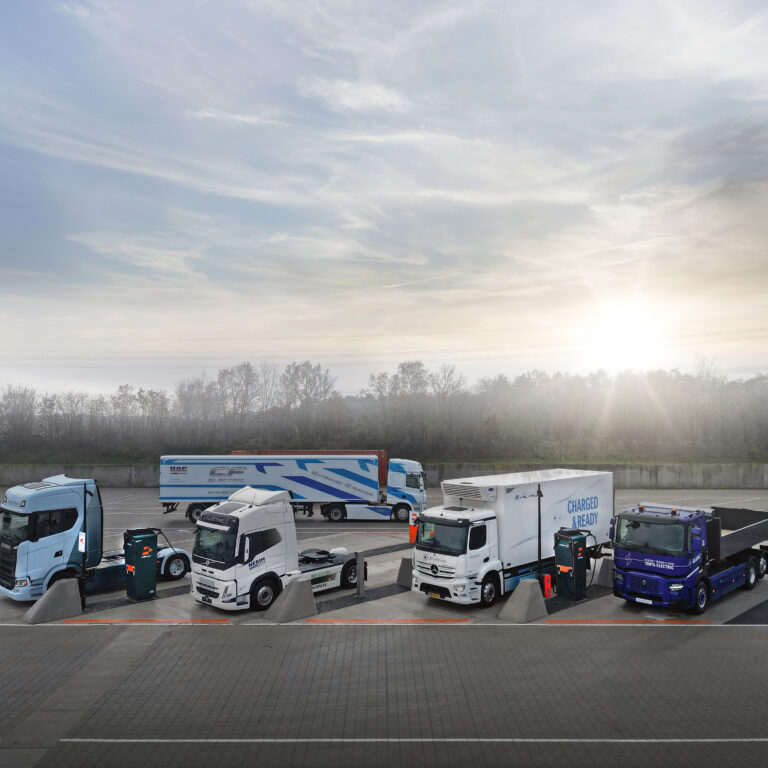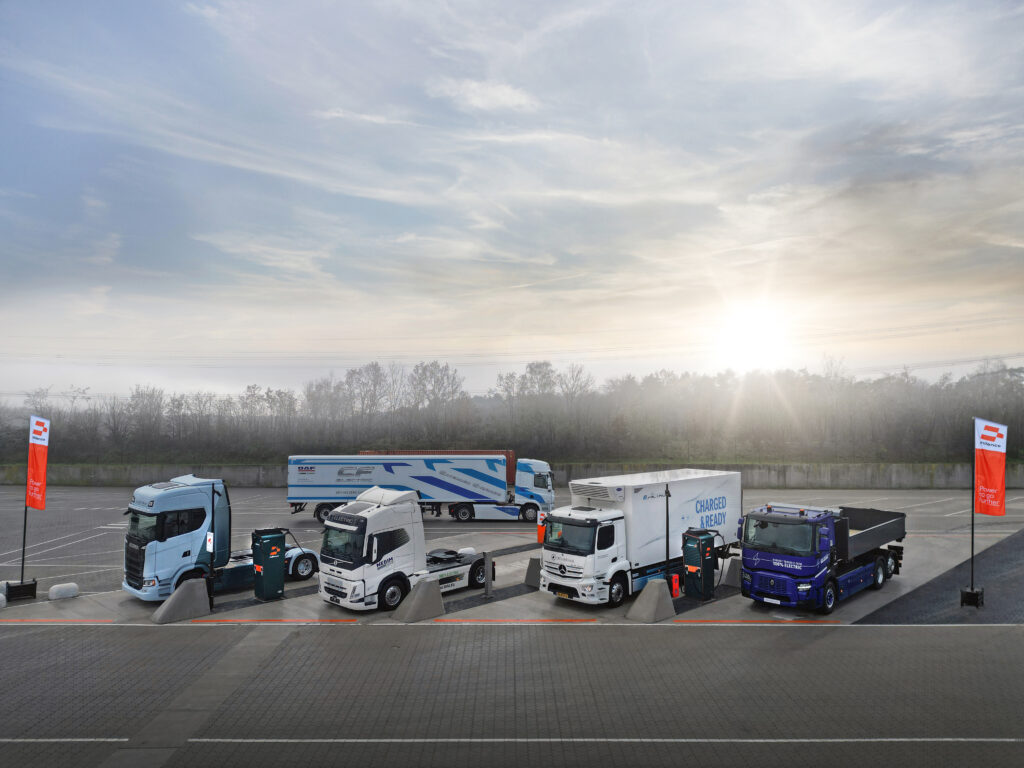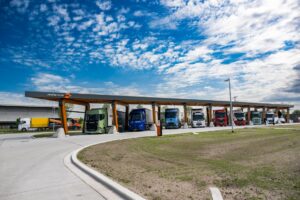The transport sector, particularly heavy duty vehicles (HDVs), is at a critical juncture as concerns over climate change escalate. With HDVs accounting for around 6% of the EU’s total CO2 emissions, the European Union has been proactive in setting ambitious CO2 reduction targets. As a key player in the development of charging infrastructure for electric trucks, Milence is closely following developments in this transition to support the EU’s vision for a sustainable future.
EU’s CO2 Emission Standards for HDVs
The EU’s commitment to reducing greenhouse gas emissions led to the implementation of stringent CO2 emission standards for HDVs. Initially set in 2019, these standards aimed for a 15% reduction by 2025 and a 30% reduction by 2030. However, recognizing the urgent need for more aggressive action, the Commission proposed a revision on 14 February 2023. The revised targets are even more ambitious, aiming for a 45% reduction by 2030, 65% by 2035, and a remarkable 90% by 2040.
The Green Deal and The Provisional Political Agreement
This amendment is a cornerstone of the EU’s Green Deal, which aims to achieve climate neutrality by 2050. On 18 January 2024, a key moment was reached when negotiators from the Council and the European Parliament reached a provisional political agreement in line with the Commission’s proposal. This agreement covers heavy-duty trucks over 7.5 tonnes and buses, with commercial vehicles such as refuse and construction vehicles to be included from 2035.
Implications for the HDV Electric Vehicle Infrastructure Sector
These revised CO2 standards send a strong investment signal to the HDV electric vehicle infrastructure sector and truck parking operators. The increased adoption of electric trucks is inevitable, escalating the demand for both public and private charging infrastructure. As a company at the forefront of this transition, Milence is gearing up to meet this surge in demand but rolling out the biggest charging network for heavy duty vehicles in Europe.
Milence’s Commitment and Industry Collaboration
At Milence, we are committed to rising to the challenge. We understand that meeting these targets requires a collaborative effort among industry stakeholders. Our current initiatives focus on expanding our charging network, integrating advanced technologies for faster and more efficient charging solutions, and partnering with other industry leaders to ensure a seamless transition to electric trucks.
Challenges and Opportunities
While we are optimistic, we also recognise the challenges that lie ahead. These include scaling up the infrastructure to support the rapid growth of electric HDVs, ensuring the reliability and accessibility of charging stations, and navigating the evolving regulatory landscape. Despite these challenges, we see this as an opportunity to innovate and lead in a sector that is central to sustainable transport.
Conclusion
The agreement reached by the EU institutions marks a significant step towards a greener future. For more detailed information on the deal, we encourage reading the press release from the Council titled “Heavy-duty vehicles: Council and Parliament reach a deal to lower CO2 emissions from trucks, buses, and trailers,” available here.



